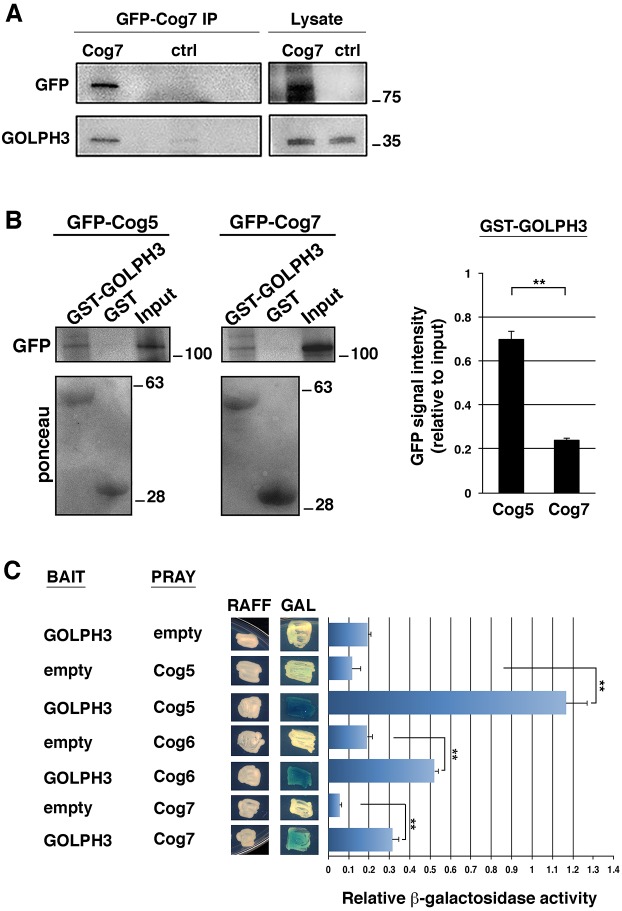Fig. 5.
GOLPH3 interacts with COG complex proteins. (A) GOLPH3 co-precipitates with Cog7 protein in Drosophila larval brains. Larval brain extracts from either Oregon-R (ctrl) or individuals expressing GFP–Cog7 protein were immunoprecipitated with anti GFP (using GFP-trap) and blotted for either GOLPH3 or GFP. 2% of the total lysate (Lysate) and one-third of the immunoprecipitates were loaded and probed with the indicated antibody. Molecular mass is given in kilodaltons. The Co-IP experiment was performed three times with identical results. (B) GST and recombinant GST–GOLPH3 proteins immobilized on glutathione beads were incubated with larval brain extracts expressing either GFP–Cog5/Fws (Farkas et al., 2003) or GFP–Cog7 (Belloni et al., 2012). GST–GOLPH3 but not GST precipitated both GFP–Cog7 and GFP–Cog5 proteins. Ponceau staining is shown as a loading control. 2% of the input and 25% of the pull-downs were loaded and probed with the indicated antibody. Molecular mass is given in kilodaltons. The graph represents quantification of the amount of GFP–Cog7 and GFP–Cog5 that were pulled down from GST–GOLPH3 in western blotting analysis. Protein band intensities were obtained from three independent experiments. (C) Yeast two-hybrid assay was used to test GOLPH3 interaction with Cog5, Cog6 and Cog7 proteins. In the presence of the GOLPH3 bait, all the indicated COG proteins induce LacZ expression (blue color indicates positive interaction). The graph shows quantification of LacZ reporter expression induced with different combinations of bait and prey plasmids. See Materials and Methods for further details. Error bars indicate s.e.m. **P<0.01 (unpaired Student's t-test).

